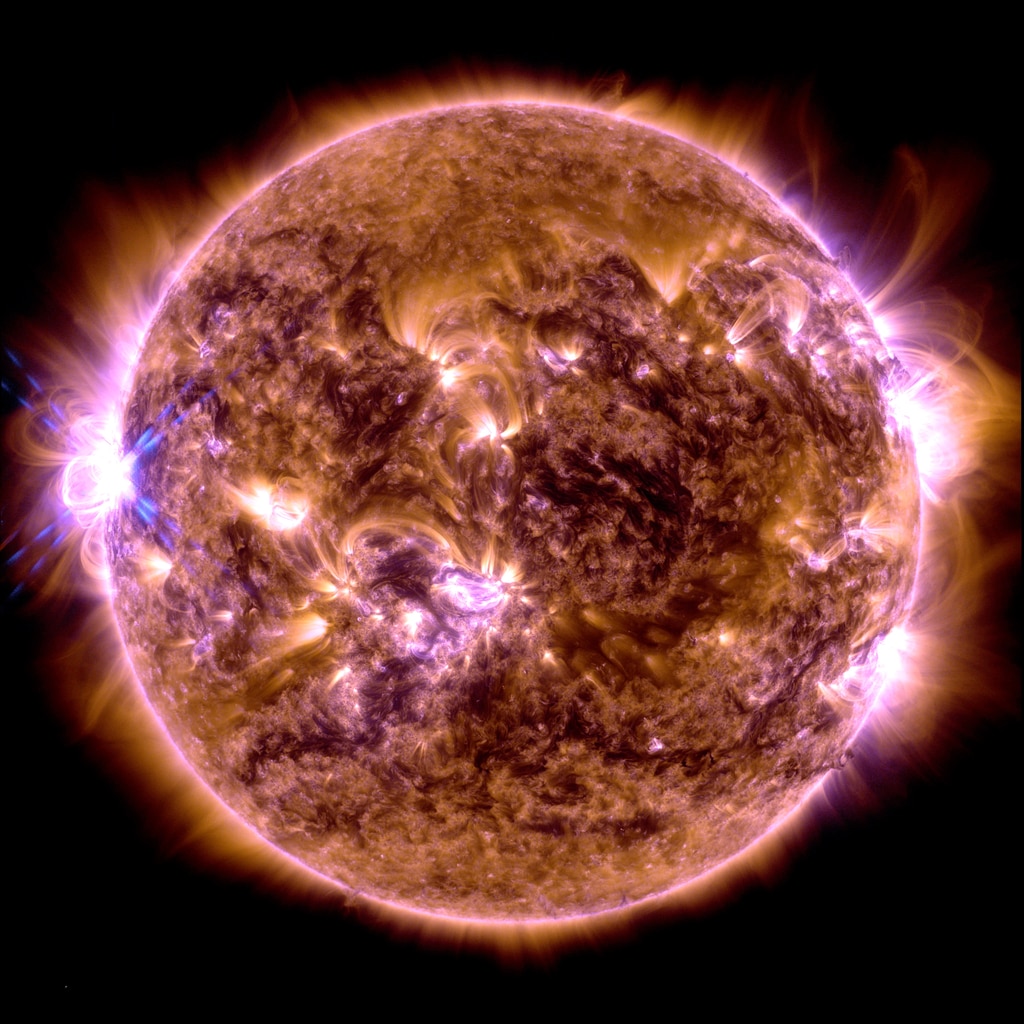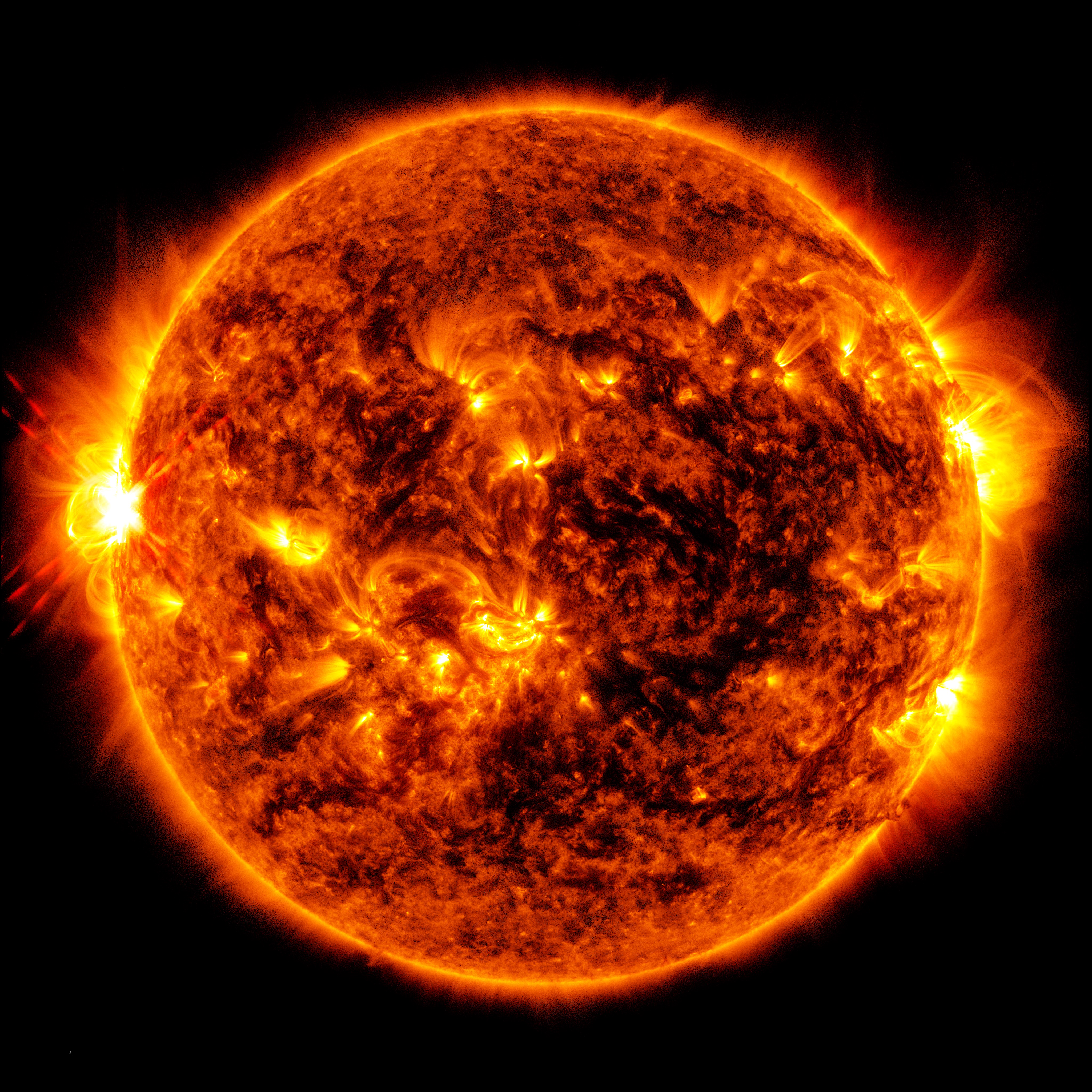
Nasa Scientific Visualization Studio
The Sun's Recent Solar Flare: A Force to Be Reckoned With
A Giant Coronal Hole Takes Shape
In a recent astronomical event, a giant dark patch known as a coronal hole emerged near the Sun's equator on December 14, 2023. Coronal holes are regions of the Sun where magnetic field lines extend out into space, allowing the Sun's plasma to escape. This phenomenon can lead to significant solar activity, as evidenced by the recent solar flare.
An X-Class Solar Flare
On December 14, 2023, the Sun emitted a powerful X-class solar flare. Solar flares are sudden and intense bursts of energy released from the Sun's atmosphere. This particular flare peaked at 4:55 pm and was recorded by NASA's Solar Dynamics Observatory (SDO). X-class flares are the most powerful type of solar flares, and they can have significant effects on Earth's communications and power grids.
The solar flare was associated with the coronal hole that had formed earlier in the day. The magnetic field lines in the coronal hole allowed the flare's energy to escape into space, creating a shock wave that traveled throughout the solar system. This shock wave can disrupt Earth's magnetic field, leading to geomagnetic storms.
While the recent solar flare was powerful, it did not pose any immediate danger to Earth. However, it serves as a reminder of the Sun's potential for causing space weather events that can affect our planet. Scientists continue to monitor the Sun's activity and provide advance warning of any potential risks.

Komentar